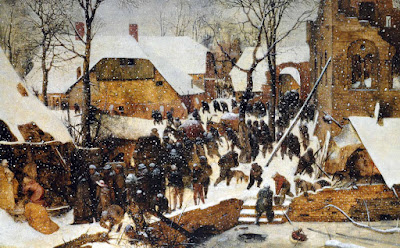Is this art buyer legitimate or pulling an internet swindle? I asked the hive for help.
 |
| I sold this painting to an online contact. Since then, she’s become a valued friend. |
There are two schools of thought among artists: those who embrace on-line selling and those who don’t. I’m strongly in the bricks-and-mortar camp, but I do occasionally sell paintings to people who see my work online.
I’m usually happy to oblige and in most cases, it works just fine.
People who regularly sell work from their websites usually accept payment through third parties like PayPal. That insures that they get their money. It gets dicey when someone wants to pay by check.
This week, I’ve been communicating with a buyer who is setting off a low-level vibration in my fraud detector. I checked a number of sources for advice. Here’s their consensus:
Check references
That’s difficult with an online contact, but I Googled him and came up with nothing. As a control, I ran the name of one of my students, my late aunt, and a sister-in-law who doesn’t use a computer. I found all of them.
 |
| This painting of the Delaware Water Gap sold to someone who saw it on my blog. There were no problems in the transaction. |
Always use a trusted middle man
The fees we pay to systems like galleries (online or real-world), eBay, PayPal and credit card companies are there in part to cover the risks involved in commerce.
If it looks too good to be true, it probably is.
Artists are particularly vulnerable because we are emotionally involved with our product. It’s hard to be objective about when a response is normal and reasonable, and when it isn’t.
I’ve noticed serious buyers generally have a specific painting or subject in mind when they contact me directly. Scammers have no real interest in the content, and don’t tend to ask incisive questions.
Don’t be overeager.
This is hard advice for the impecunious artist to follow, but scams work because their victims’ excitement blinds them to the deal’s faults.
 |
|
Low Bridge (Erie Canal) 40X30, is probably only going to sell online, since I no longer have any gallery representation in New York.
|
Never accept personal checks and only accept checks for the exact amount.
You mustn’t ship the painting until the check clears, no matter how much urgency the client expresses.
Does the money pass the sniff test?
We’ve all heard of the
Nigerian money scamand its many daughters. Nearly all online scams start with an unusual financing request from the buyer, often including an overpayment.
 |
|
The same is probably true of this little study of the Queensboro Bridge approach. It’s a good painting, but it’s not going to sell in a Maine gallery.
|
Avoid buyers with too many stories.
This is a red flag for me in the conversation I’m currently having. He might be a “Chatty Cathy,” or he might be trying to muddy the waters. But the sob story, in all its wonderful permutations, is the oldest scam around.
As Frank Scafidi, public affairs director of the National Insurance Crime Bureau
told USA Today, “Slow down, ask questions and don’t become emotionally involved in the sale.”
Trust your gut. “If it feels awkward, stop all contact,”
expert Linda Criddle
told AARP.
Be wary of overseas buyers.
This is tricky for me, since I have sold paintings to people around the globe. However, it’s harder to verify payments across national borders.



















